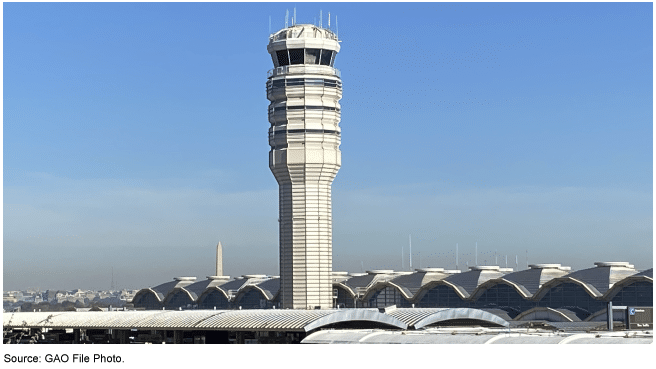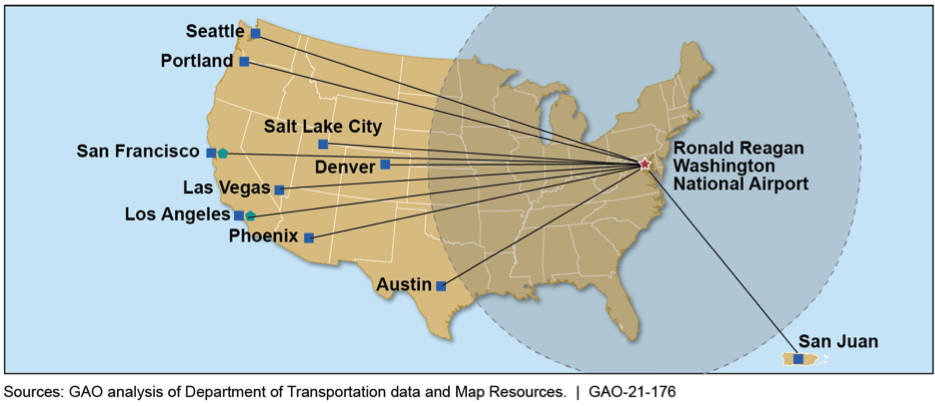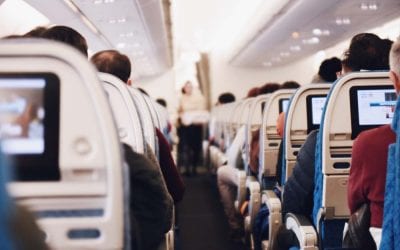For Travelers United, if the perimeter rule is updated, it will provide more competition and choice for the entire region.
As Congress debates the FAA Reauthorization Bill this summer, the DCA (Washington Reagan Airport) Perimeter Rule is again in the crosshairs. This federal rule, which was put into effect in the 1960s to protect Dulles International Airport (IAD) from DCA’s structural advantage as the airport of choice for local air travelers and thereby allow IAD to gain footing gradually, should be updated in the FAA bill to add more beyond perimeter slots at DCA and, eventually, completely be phased out.

Six decades is long enough to protect IAD from competition. The rule has denied air travelers the right to fly to and from the DC area using their chosen local airport. Just as the Dallas Love Field and Houston Hobby restrictions were removed, generating enormous public benefits, the DCA perimeter rule should also be relaxed and, eventually, sunsetted.
From strictly a competition and consumer choice point of view, the federal government should not be involved in placing its thumb on the scale to protect certain airlines and airports from competitive alternatives.
The reasons for the DCA perimeter rule have changed dramatically since 1966.
- Planes are more efficient and quieter. Larger planes today can take off and land at DCA with less noise than in the ’60s — GAO’s analysis of the Department of Transportation (DOT) data from 2010 through 2019 showed that airlines used larger aircraft on beyond-perimeter flights carrying, on average, about 75 more passengers than within-perimeter flights. While these larger aircraft may use more capacity, they did not contribute to a substantial increase in flight delays at Reagan National.
- The metropolitan area has grown significantly around Dulles Airport. And flight demand has grown dramatically. — Demand at IAD has increased dramatically since the counties housing and surrounding the airport have more than tripled in population since the 1970s.
- Nonstop air access to DC is needed more today than in the ’60s. It will generate an economic benefit to DC and help with tax revenues. The DC area is now home to 28 percent of the Fortune 500 companies.
- Public transportation between DC and the metropolitan area’s three airports has improved. Today, Dulles Airport can be reached by DC Metro from downtown. DC Metro, the Maryland Commuter Rail, and Amtrak combined network serve Baltimore Washington International (BWI).
A similar limitation put in place by Congress was the Wright Amendment, which was recently eliminated. Both airports prospered.
By way of background, the Wright Amendment was a federal law that governed air passenger traffic at Dallas Love Field to protect nearby DFW from the competition. Subsequent changes to the Wright Amendment relaxed these restrictions over time. The law was fully repealed in 2014, provoking dire predictions regarding the survivability of DFW.
These dire predictions proved unfounded. Yes, Love Field traffic jumped. But DFW eventually competed to be in the top 10 airports in the world regarding passengers and flights. According to the Dallas Morning News, it turned out that the enhanced choice and competition enabled by the repeal of the Wright Amendment propelled both airports to coexist harmoniously and even prosper.
…Love Field traffic jumped nearly 16 percent in 2007 compared with 2006. Its passenger totals, both arriving and departing passengers, reached 8.47 million in 2013, up 23 percent from 2006’s totals of 6.87 million.
At the same time, DFW’s totals went down as American and other carriers struggled with rising fuel prices and the recession of 2008 and 2009. Its 2006 total of 60.2 million arriving and departing passengers dropped three straight years to a low of 56 million in 2009 before starting to climb.
In 2013, the airport climbed back above 60 million, to 60.4 million… passenger traffic in 2004 is running 5 to 6 percent ahead of last year…
“From a consumer perspective, from a region perspective, this is a good thing. It offers more choice. At least initially, it’ll probably result in lower fares. Any time the region can have more service, if you look at it from a region perspective, that’s a good thing,”…
None of the predictions of DFW doom came true.
The perimeter rule has already been changed three times and should be changed again.
According to the Government Accountability Office (GAO), the Perimeter Rule has been changed three times.
On three occasions — 2000, 2003, and 2012—federal statutes have provided exemptions to the perimeter rule, collectively allowing 40 daily beyond-perimeter flights (20 round trips) at Reagan National. Of these exemptions, 32 were new beyond-perimeter flights and eight allowed airlines to convert existing slots to beyond-perimeter flights. The Metropolitan Washington Airports Authority (MWAA) operates Reagan National and Dulles, and DOT and the Federal Aviation Administration (FAA) oversee these rules.
These changes have had no material adverse impact on either DCA or IAD. If anything, they have enabled more choice and competition at DCA. Air travelers can now reach major Western cities like Seattle, Portland, San Diego, and Los Angeles nonstop from DCA. Sunsetting the DCA perimeter rule would open up even more flight options from DCA and, in doing so, lower fares.
Consumer desires are more competition, choice, and lower prices.
The flying balance between Dulles and DCA must be recalibrated. Eventually, the perimeter rule shouldbe sunsetted entirely. As has been explained to Travelers United, the DCA slots have been designed differently for regional flights and long-haul flights. Any changes in the slot alignment should first eliminate the difference between regional and long-haul slots.
The current perimeter rule no longer protects the airport. It protects airline slot control.

Unsurprisingly, American Airlines opposes changes to the DCA perimeter rule. It wants to protect its DCA slots and its leading position at DCA from the competition. Likewise, United Airlines wants to protect its Dulles hub from competition.
Coalitions have formed to insulate DCA’s current federal perimeter rule from any changes. Powerful airline interests are again working to limit competition and keep airfares high.
It is time that Congress reexamines the (im)balance of flying among the three major Washington, DC, airports. This Travelers United post is the first of several that will cover the ongoing debate over the perimeter rule during the discussions over the FAA Reauthorization Bill.
READ ALSO:
California Resort Fee Bill paves way for eliminating deceptive fees
DOT enforces the law. Airlines are canceling and changing flights at a record pace.

Charlie Leocha is the President of Travelers United. He has been working in Washington, DC, for the past 14 years with Congress, the Department of Transportation, and industry stakeholders on travel issues. He was the first consumer representative to the Advisory Committee for Aviation Consumer Protections appointed by the Secretary of Transportation from 2012 through 2018.





